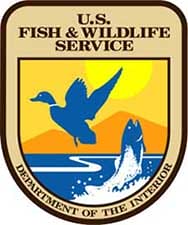

Washington, DC -(Ammoland.com)- The U.S. Fish and Wildlife Service today released the Candidate Notice of Review, a yearly status appraisal of plants and animals that are candidates for Endangered Species Act (ESA) protection.
Twenty-two species from Hawaii and one from Independent Samoa and American Samoa were added to the candidate list, one species was removed, and one has changed in priority from the last review conducted in November 2013. There are now 146 species recognized by the Service as candidates for ESA protection.
The Service is now soliciting additional information on these species and others that may warrant ESA protection to assist in preparing listing documents and future revisions or supplements to the Candidate Notice of Review. Candidate species are plants and animals for which the Service has enough information on their status and the threats they face to propose as threatened or endangered, but for which a proposed listing rule is precluded by other, higher priority listing actions.
The annual review and identification of candidate species helps landowners and natural resource managers understand which species need most to be conserved, allowing them to address threats and work to preclude ESA listing.
The 23 species being added to the candidate list include the Ma‘oma‘o, a large, dusky olive-green honeyeater native to Upolu and Savaii, Independent Samoa (Samoa), and Tutuila Island, American Samoa, but now only found in small populations on the islands of Savaii and Upolu.
Also being added are 18 Hawaiian flowering plants and four ferns found on one or more of the Hawaiian Islands; all are being negatively affected by nonnative animals and plants. Although candidate species do not receive ESA protection, the Service works to conserve them and their habitats using several tools: a grants program funds conservation projects by private landowners, states and territories; and two voluntary programs – Candidate Conservation Agreements (CCAs) and Candidate Conservation Agreements with Assurances (CCAAs) – engage participants to implement specific actions that remove or reduce the threats to candidate species, which helps stabilize or restore the species and can preclude ESA listing.
The removal of one species announced today; Packard’s milkvetch, was based on the reduction of the species’ primary threat from off-highway vehicle use, the increase in the number of known locations which increased the overall population, and the species’ overall stable population status over a five-year monitoring period.
All candidate species are assigned a listing priority number based on the magnitude and imminence of the threats they face. When adding species to the list of threatened or endangered species, the Service addresses species with the highest listing priority first. Today’s notice announces changes in priority for one species; Sprague’s pipit, based on a reduction in the imminence of the threat from conversion of habitat on the bird’s breeding grounds.
The complete notice and list of proposed and candidate species is published in the Federal Register and can be found online at http://www.fws.gov/endangered/what-we-do.
About the U.S. Fish and Wildlife Service (USFWS)
The mission of the U.S. Fish and Wildlife Service is working with others to conserve, protect, and enhance fish, wildlife, plants, and their habitats for the continuing benefit of the American people. We are both a leader and trusted partner in fish and wildlife conservation, known for our scientific excellence, stewardship of lands and natural resources, dedicated professionals, and commitment to public service. For more information on our work and the people who make it happen, visit www.fws.gov.
